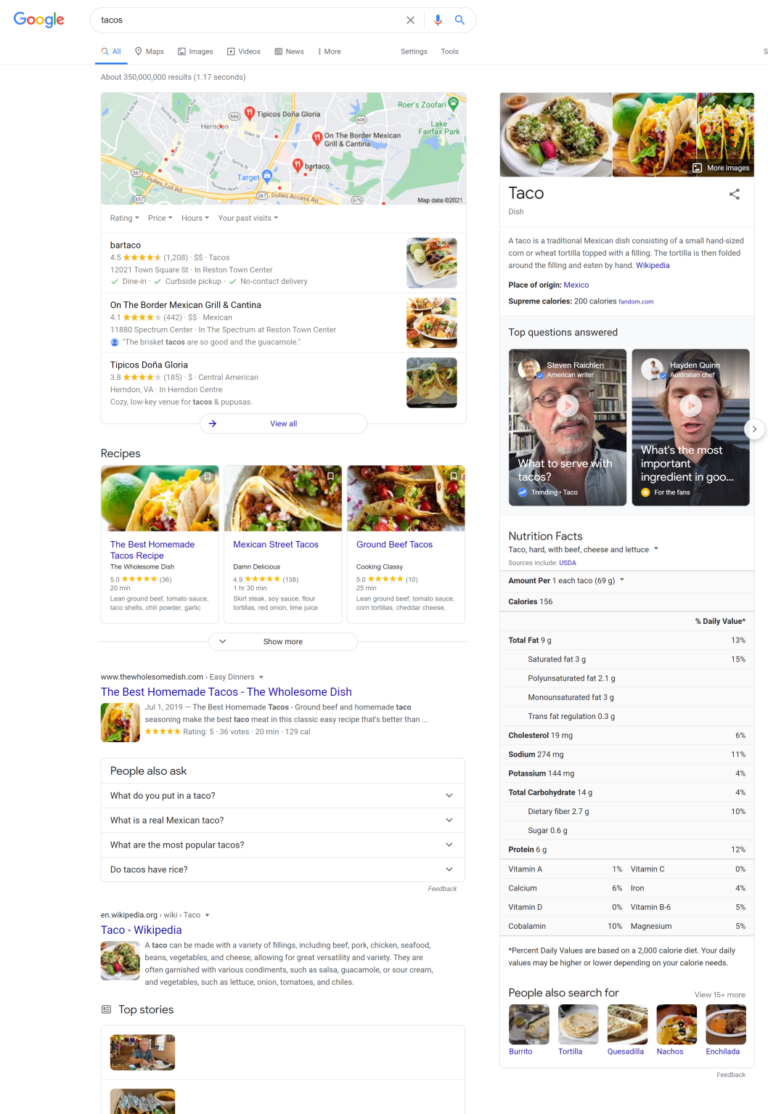The New Goal of Search Engines
For the first 15 years of Google Search, its primary goal has been to get users off its Search Engine Results Page (SERP) as quickly as possible. The Google.com page enabled users to enter in a keyword and it search engine would quickly serve up links to the best sites to learn more about the topic.

SERP Features
However, now the strategy is trending in the opposite direction. In recent years, Google has introduced several “SERP features” that display above, below, besides, and in between search results. You have undoubtedly seen these SERP features for popular keywords.
For example, if you were searching on “tacos” you will see a whole page of panels like the ones below:
SERP features for “taco” searched from Reston, Virginia (updated January 2021)
The team at Moz wrote an awesome article explaining the various SERP features and their level of “obtainability,” which I would encourage you to read.
Weather with No Click Throughs
The goal of these SERP features is very different. Instead of quickly getting you to another website, many of these SERP features are designed to keep you on the Google pages. For example, when you search on “Weather Los Angeles,” Google displays the forecast directly in the search results. The user does not need to click through to weather.com to get the high-level information they are seeking.
Google SERP results for “Los Angeles Weather”
Sports Scores with No Click Throughs
Sports scores are another good example. Suppose I searched for “World Series scores,” Google would display a featured snippet at the top of the page with all of the results from recent games displayed. The user does not need to visit ESPN or USA Today’s website to get the highlights.
Google SERP results for “World Series 2019”
Public Profiles with No Click Throughs
Knowledge Panels are another example. These often appear to the right of the search results and offer images and brief descriptions of the keyword entered. For example, if I search on “Elon Musk” the user is presented with several photos, social media profiles, a Wikipedia bio excerpt, and a list of key facts such as his birthday, spouses, children, and education.
Google SERP results for “Elon Musk” (updated January 2021)
Several SEO experts have referred to these as “zero-click” search results. The user enters a keyword into Google with a goal of finding the best website link to click on, but instead ends up getting the answer to their question via the search engine results page. There is no click to another site and no opportunity for website operators to engage the user.
Of course, there is one big exception. Google still continues to drive traffic to websites running online ads!













